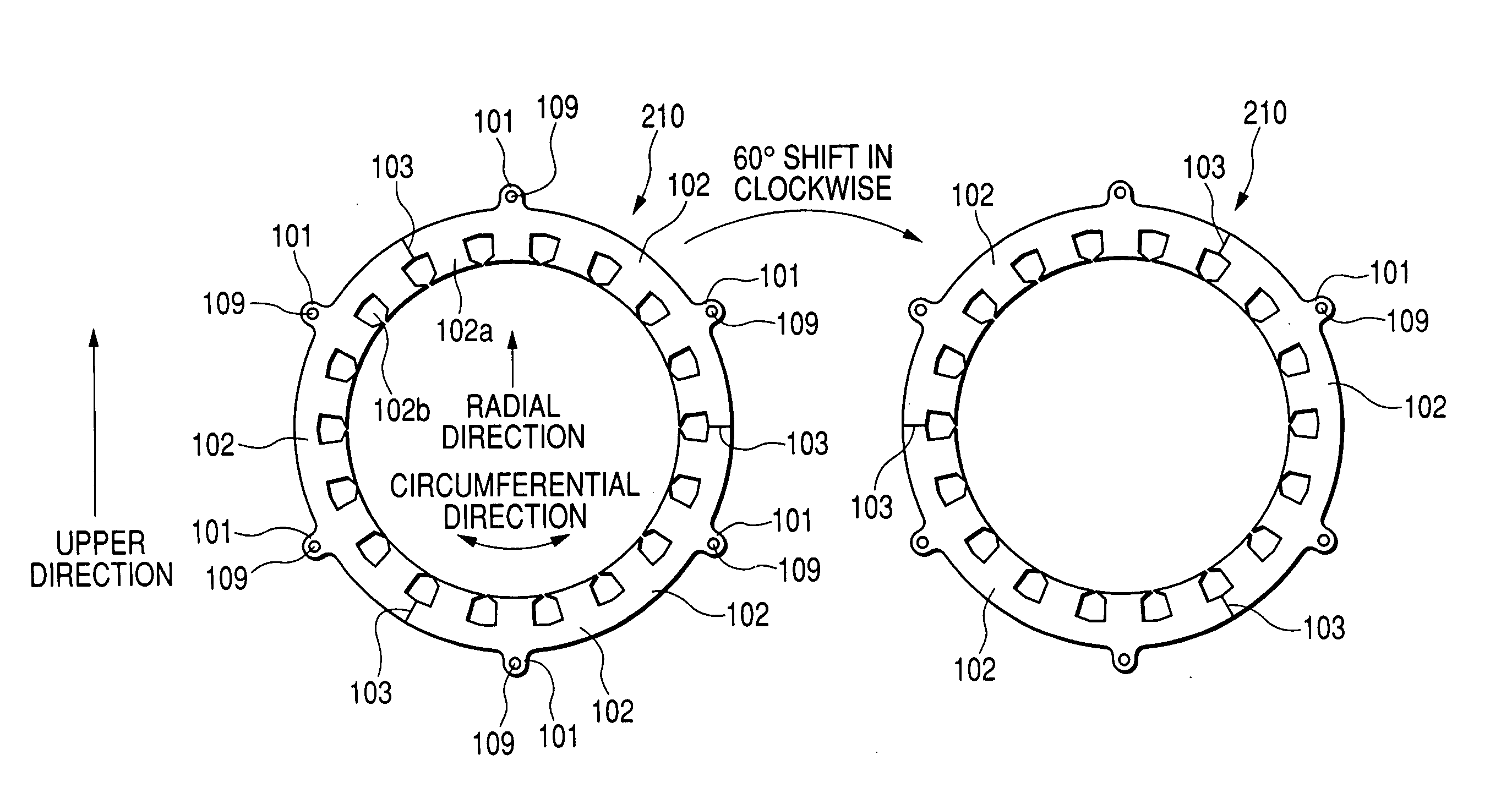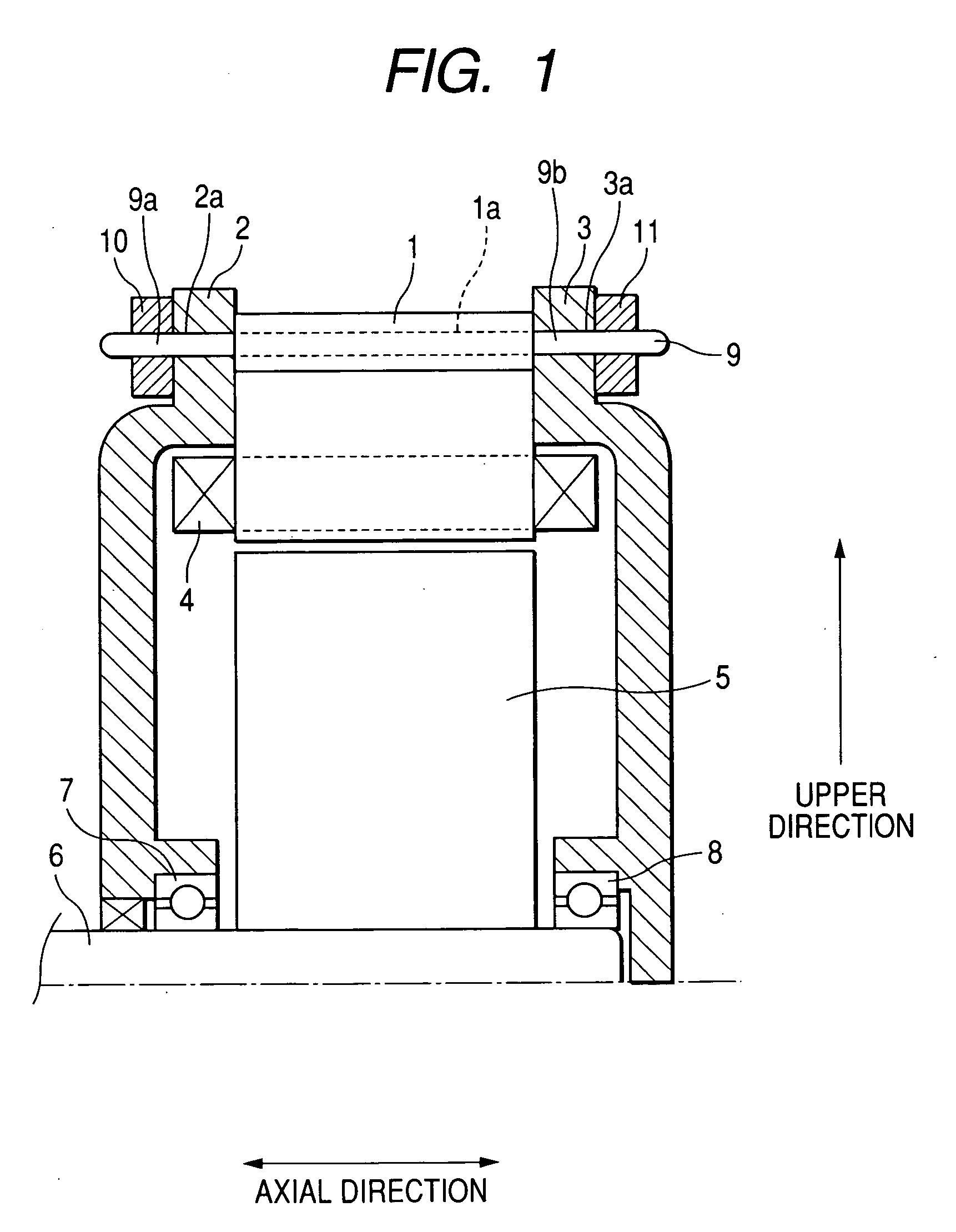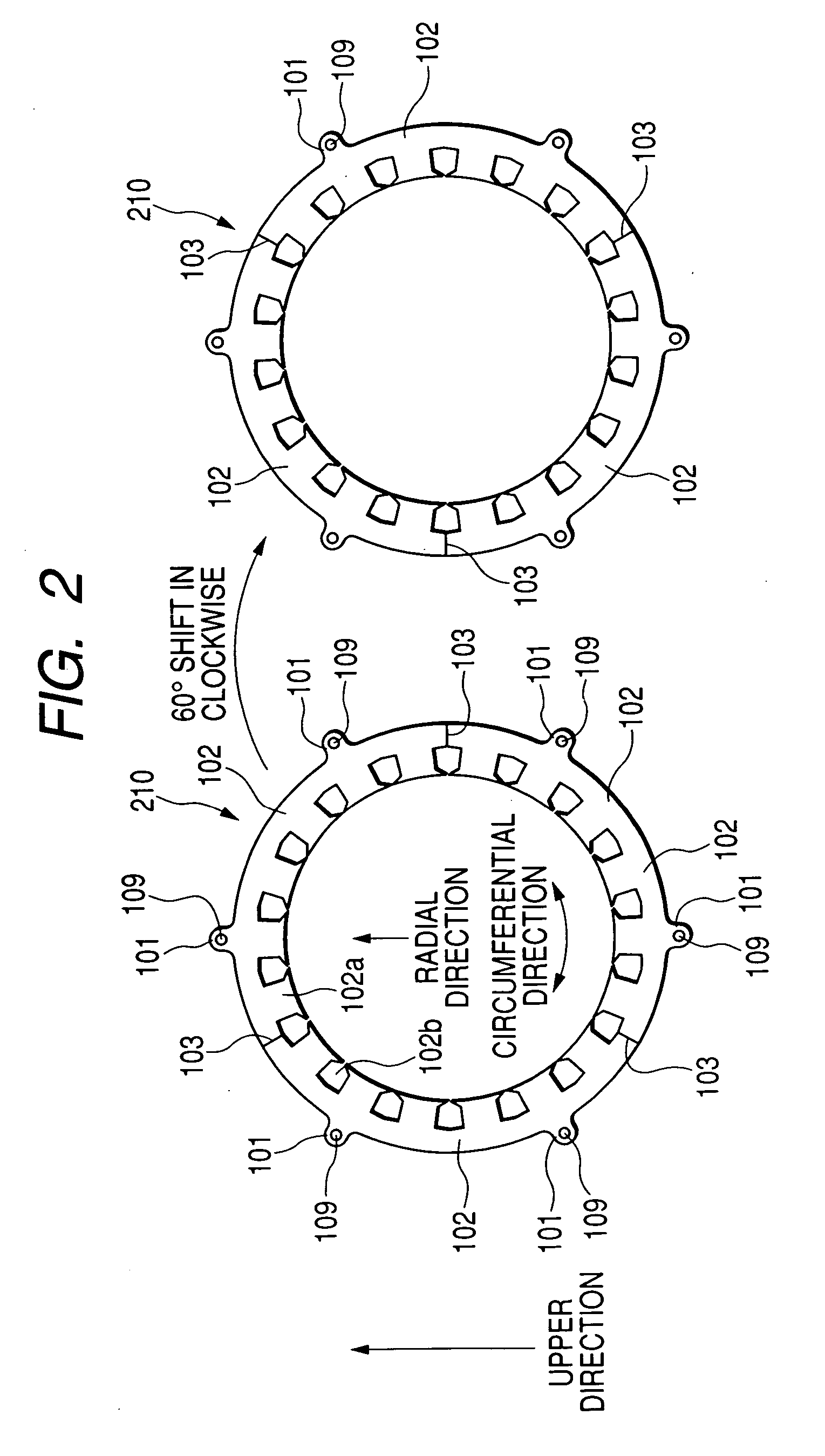Rotary electric machine with a stator core made of magnetic steel sheets and the stator core thereof
a technology of stator core and magnetic steel sheet, which is applied in the direction of dynamo-electric machines, magnetic circuit rotating parts, and shape/form/construction of magnetic circuits, etc. it can solve the problems of degrading the magnetic characteristics of the stator core, inevitably increasing the magnetic resistance at an area of each butted surface, and inevitably adding compressive stress to each core sheet along the plane directions. , to achieve the effect of convenient fixation
- Summary
- Abstract
- Description
- Claims
- Application Information
AI Technical Summary
Benefits of technology
Problems solved by technology
Method used
Image
Examples
embodiment 1
[0036]FIG. 1 is a longitudinal sectional view of a rotary electric machine for a vehicle according to first to tenth embodiments of the present invention. As shown in FIG. 1, a rotary electric machine such as an electric motor or a generator has a stator core 1 formed substantially in a cylindrical shape, a front housing 2 formed substantially in a shape of a shallow dish, a rear housing 3 formed substantially in a shape of another shallow dish, a stator coil 4 wound on the core 1 to generate a magnetic field in the core 1 in response to an alternating current or to generate an alternating current, a rotary shaft 6 being rotatable on a center axis of the core 1, and a rotor 5 disposed in a hollow space of the core 1 and being rotatable around the shaft 6 to be rotated with the shaft 6 or to rotate the shaft 6 according to an electromagnetic interaction with the core 1. The core 1 will be described in second to tenth embodiments in detail.
[0037] The machine further has bearings 7 an...
embodiment 2
[0063]FIG. 4 is a plan view of three ring-shaped sheet units in the stator core 1 according to a second embodiment.
[0064] A first ring-shaped sheet unit 220 of a first orientation shown on the left side in FIG. 4, a second ring-shaped sheet unit 220 of a second orientation shown on the middle in FIG. 4 and a third ring-shaped sheet unit 220 of a third orientation shown on the left side in FIG. 4 have the same shape as one another. The units 220 of the three orientations are cyclically laminated along the axial direction while keeping the orientations of the units 220 shown in FIG. 3, and the core 1 is formed. That is, each unit 220 of the first orientation occupies the (3N-2)-th layer (N is a natural number), each unit 220 of the second orientation occupies the (3N-1)-th layer, and each unit 220 of the third orientation occupies the 3N-th layer.
[0065] Each unit 220 has three first circular arc-shaped core sheets 104 and three second circular arc-shaped core sheets 105 alternately ...
embodiment 3
[0071]FIG. 5 is a plan view of three types ring-shaped sheet units in the stator core 1 according to a third embodiment.
[0072] A first type ring-shaped sheet unit 230A shown on the left side in FIG. 5 has six circular arc-shaped core sheets 106 made of magnetic steel. A second type ring-shaped sheet unit 230B shown on the middle in FIG. 5 has the six core sheets 105. A third type ring-shaped sheet unit 230C shown on the right side in FIG. 5 has six circular arc-shaped core sheets 107. The six sheets in each type unit are disposed along its circumferential direction to be butted to one another through butted surfaces 103. The three units 230A, 230B and 230C are cyclically laminated along the axial direction so as to align a group of holes 106 of the units along the axial direction and form the core 1.
[0073] The sheets 106 differ from the sheets 105 in that each sheet 106 has one attaching portion 101 shifted by 20 degrees in counterclockwise from that of the sheet 105. The sheets 1...
PUM
 Login to View More
Login to View More Abstract
Description
Claims
Application Information
 Login to View More
Login to View More - Generate Ideas
- Intellectual Property
- Life Sciences
- Materials
- Tech Scout
- Unparalleled Data Quality
- Higher Quality Content
- 60% Fewer Hallucinations
Browse by: Latest US Patents, China's latest patents, Technical Efficacy Thesaurus, Application Domain, Technology Topic, Popular Technical Reports.
© 2025 PatSnap. All rights reserved.Legal|Privacy policy|Modern Slavery Act Transparency Statement|Sitemap|About US| Contact US: help@patsnap.com



